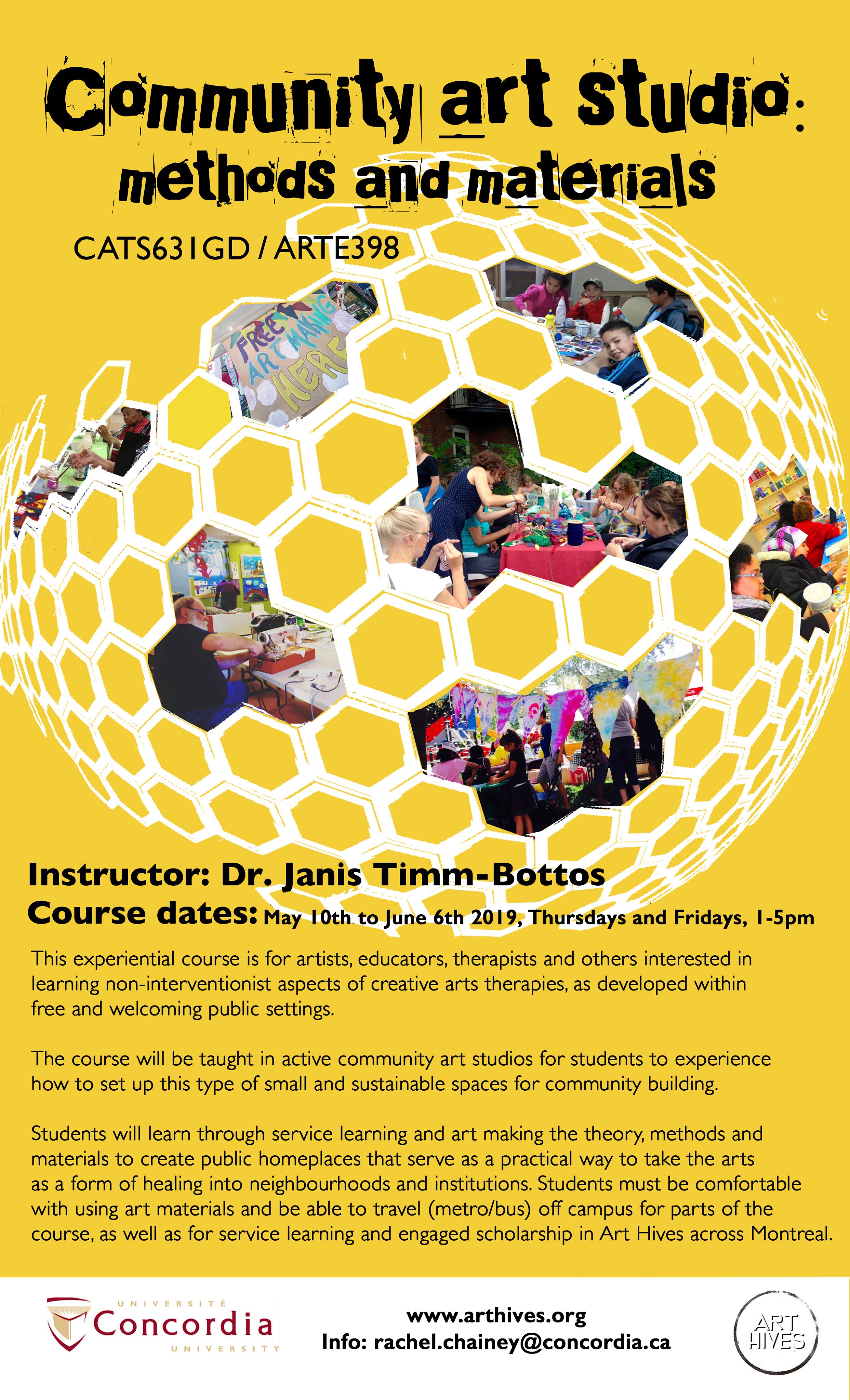
Community Art Studio: Methods and Materials
CATS631 / ARTE398
May 10th to June 6th 2019, Thursdays & Fridays 1-5 pm
Instructor: Janis Timm-Bottos
This experiential course is taught by associate professor, Dr. Janis Timm-Bottos (Creative Arts Therapies) in a welcoming community setting, La Ruche d'Art St-Henri, an arts-based third space fostering social inclusion and community building, as well as at the Art Hives HQ at Concordia University. Thecourse, offered annually since 2011, attracts students across the university, including creative arts therapies, art education, studio arts, theater, music, philosophy, urban planning and anthropology. The course is cross-listed in order to welcome both graduate and undergraduate students, as well as community members who join the cohort as independent scholars.
Hands-on learning and art making are integral to every aspect of this course. In addition to connecting with community members within the studio in the post-industrial neighbourhood, students are also required to complete 15 hours of service learning within other grassroots or institutional settings that are part of the Art Hives Network. These urban art hives which share the strength-based, free and open access inherent to all Art Hives, they are also quite diverse: from social housing, to city parks, co-ops, seniors' residences, libraries, community missions, womens’ centres, schools and museums. In every setting, students practice the non-interventionist methods at the core of the Art Hives model of public practice creative arts therapies: witnessing, arts-based humble inquiry, informal and horizontal skill sharing through ''Each-One-Teach-One'', as well as building studio relationships within each ''public homeplace'' (Belenky, 1996), as they learn about the ''ethics of discomfort'' (Foucault in Rabinow, 1994).
Firmly rooted in the Psychologies of Liberation (Watkins & Shulman, 2008), public practice creative arts therapies as developed at Concordia University invites all students to begin to examine their own social location as it relates to privilege, power, and the oppressive forces of colonialism and gentrification at play in their communities. Throughout the course, students undertake important steps of a journey, deepening their understanding of these concepts and their personal relationship to them, through art making and the reflective practice of field notes. The course culminates with a public presentation of the students' final projects, attended by community members, academic and other partners, and funders.